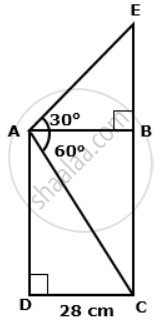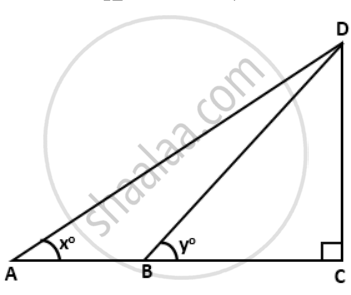Advertisements
Advertisements
प्रश्न
If θ = 30°, verify that: sin2θ = `(2tanθ)/(1 ++ tan^2θ)`
उत्तर
Given: θ = 30°
L.H.S.
= sin2θ
= sin2 x 30°
= sin60°
= `sqrt(3)/(2)`
R.H.S.
= `(2tanθ)/(1 + tan^2θ)`
= `(2tan30°)/(1 + tan^2 30°)`
= `(2 xx 1/sqrt(3))/(1 + (1/sqrt(3))^2`
= `(2/sqrt(3))/(1 + 1/3)`
= `((2)/sqrt(3))/(4/3)`
= `(2)/sqrt(3) xx (3)/(4)`
= `sqrt(3)/(2)`
⇒ L.H.S. = R.H.S.
⇒ sin2θ = `(2tanθ)/(1 + tan^2 θ)`.
APPEARS IN
संबंधित प्रश्न
State for any acute angle θ whether sin θ increases or decreases as θ increases
In ΔABC, ∠B = 90° , AB = y units, BC = `(sqrt3)` units, AC = 2 units and angle A = x°, find:
- sin x°
- x°
- tan x°
- use cos x° to find the value of y.
Calculate the value of A, if (sec 2A - 1) (cosec 3A - 1) = 0
Find the magnitude of angle A, if tan A - 2 cos A tan A + 2 cos A - 1 = 0
Find the value of 'A', if (2 - cosec 2A) cos 3A = 0
If `sqrt(3)` sec 2θ = 2 and θ< 90°, find the value of
cos2 (30° + θ) + sin2 (45° - θ)
Find the length of EC.
Find x and y, in each of the following figure:
If tan x° = `(5)/(12) . tan y° = (3)/(4)` and AB = 48m; find the length CD.
Evaluate the following: sin35° sin45° sec55° sec45°
